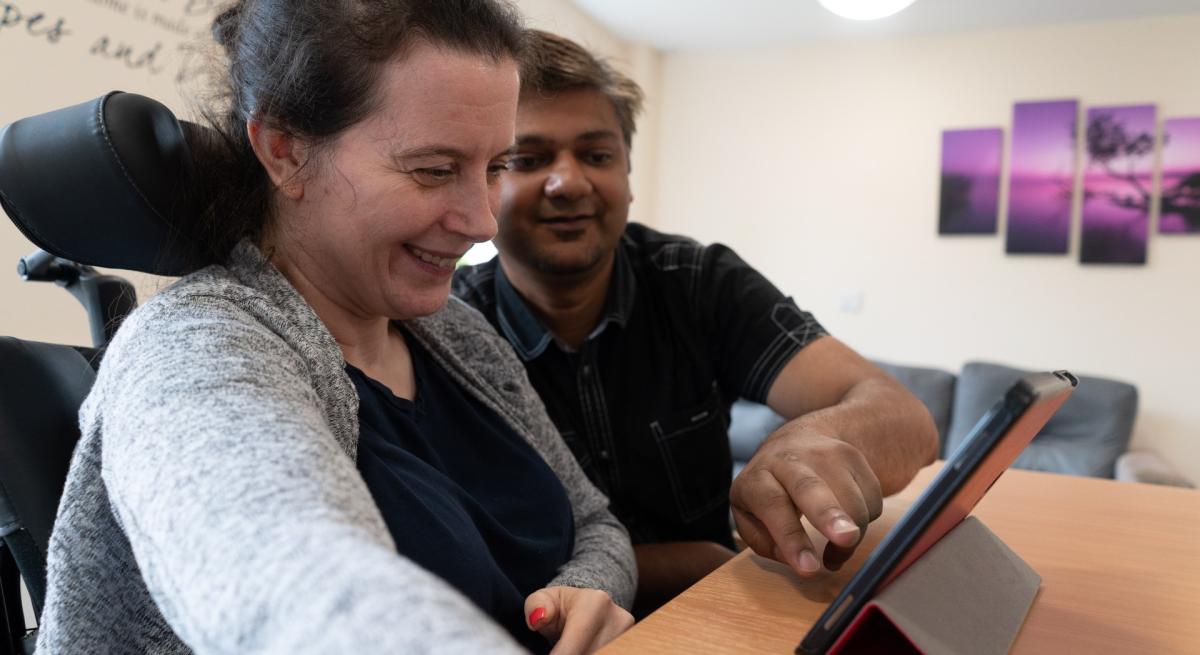
Encouraging an inclusive working environment
Whether it’s in a physical office or the home office, it’s important that employees feel comfortable and included within their working environment. A truly inclusive employer understands that the workplace must be designed with everyone in mind and offer tailored solutions to ensure that everyone can succeed.
Every industry is different, but it doesn’t matter if your workplace is a warehouse or a state of the art office building, the same principles of inclusion apply.
Follow our steps below and you’ll be on the way to having an inclusive workplace and be sure to download our free factsheet for more information.
Consider your physical space
Hub offices
The pandemic has changed how people work in the office. It remains to be seen to what extent office life will have changed, but working 9-5 back in an office 5 days a week looks unlikely. Instead employers should consider hub offices. These are smaller, more personalised and closer to where your staff live. This makes them more accessible and if matched with some unique interiors, a truly inspiring space can be created for your employees.
Office design
A bland, grey and fluorescent lit office isn’t representative of the personalities of your staff and their differences. Consider the interior design as a sensory-friendly space. This ensures equity of access and will lead to greater inclusion. That means thinking about the lighting, furnishings and the ability to ‘switch-off’ or find peace. The same applies to workplace canteens or rest areas.
Maybe it’s virtual?
If possible, all roles should support virtual working. Everyone’s life is different and having to commute daily may limit your business’ ability to find the best staff. Remote working can also allow your employees to have a better work life balance, especially if they have young children.
Have inclusive meetings
Meetings and conference calls, whether virtual or in person, can be difficult for people with learning disabilities or autistic people, especially if the person doesn’t like big groups. There are some simple principles to follow to make meetings more enjoyable for everyone:
Consider who to invite
If the meeting has more than two people in it, there’s a good chance the input is needed of additional team members. Make sure the chairs of meetings only invite those who need to be there and ensure that everyone’s opinions are heard, if they want to share. Chairs should be aware that some people may find it difficult to stand up in big groups, so opportunities should be given to allow people to share their thoughts outside the meeting too. Consider a policy of having smaller meetings.
Keep to time and keep it short
Nobody likes an overrunning meeting, so ensure your staff set a realistic duration. Ideally keep meetings below the hour to allow staff to prepare for their next engagement. Smaller meetings will also keep staff focused and potentially lead to better ideas.
Have an agenda
Ensuring your staff enter meetings with a clear agenda will lead to increased productivity. It also makes sure that everyone is able to prepare. This helps for staff who may find it difficult to respond ‘on the spot’.
Find out more
Encouraging an inclusive workplace doesn’t stop with design and meetings, you should also consider technology and other working practices. Download our free factsheet to find out more, or get in touch by emailing RWA@seeability.org to get specialist support.



